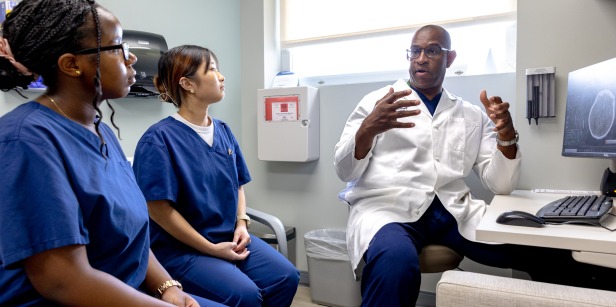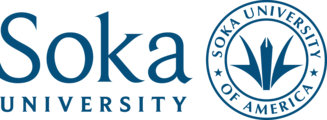
Applying for Medical, Dental, or Veterinary School
Soka University of America is dedicated to supporting students and alumni as they pursue careers in medicine, dentistry, and veterinary medicine. Applying to professional schools requires thoughtful planning, early preparation, and a clear understanding of the process and what programs seek in their applicants.
Below is an overview of the application process and guidance to help you assess your readiness.
Overview Timeline of the Application Cycle
The application process generally follows the timeline outlined below. More detailed information about each stage is provided in the sections that follow.
| Stage | Approximate Timing | Description of Process |
| Assessment of readiness & committee letter preparation | Jan – May | Potential applicants assess academic and experiential preparation, meet with Soka HPA, submit intent to apply form, and contact letter writers. |
| Primary applications open | May – June | Centralized application services open for submission of academic records, test scores, personal statements, and school selections. Early submission is strongly recommended. |
| Committee letters sent | June | Soka University sends committee letters to accompany primary applications. |
| Primary application verification | May – July | Application services verify transcripts and test scores, a process that may take several weeks. |
| Secondary applications sent | June – August | Schools invite selected applicants to submit supplemental applications, often including additional essays and fees. |
| Interviews | August – January | Selected applicants participate in interviews to further assess fit and qualifications. |
| Acceptances | October – April | Schools issue admission offers on a rolling basis until all seats are filled. |
| Matriculation | Following Fall | Admitted students begin their studies, typically in the fall semester following acceptance. |
ASSESSING READINESS
Admissions committees seek applicants who demonstrate academic excellence, meaningful service, and professional maturity. Medical and dental schools prioritize depth of preparation over speed, and students should apply when they are the most competitive—not simply when they become eligible. Many successful applicants take one or more gap/formative years to strengthen their candidacy. The average age of medical school matriculants spans a wide range, including individuals in their late 20s and beyond.
Competitive applicants typically demonstrate:
- Strong academic performance, particularly in science coursework, with positive trends
- High standardized test scores (i.e., MCAT, DAT)
- Meaningful clinical experience, such as shadowing, direct clinical work, or volunteering in hospitals
- Research acumen
- Sustained community service and leadership
- Professional maturity, including clear communication, teamwork and leadership, reliability, and active engagement with advising
According to the AAMC, 2024 U.S. MD matriculants had an average GPA of 3.79, an average MCAT score of 511.8, and completed an average of 709 community service hours, contributing over 16.4 million hours collectively. These benchmarks offer a reference point for what metrics are competitive.
Applicants must demonstrate readiness for the academic, professional, ethical, and interpersonal demands of these programs, and show that they are prepared to carry forward the values of a Soka education—such as respect for human dignity, contributive citizenship, and a commitment to creating value in their careers.
If, after reviewing your preparation, you believe you are ready to apply, meet with the Health Professions Advising Office and submit the Intent to Apply form to begin the committee letter process. For more details, please see Committee Letter Information.
PRIMARY APPLICATION
You submit your primary application through a centralized application service (CAS). These services collect, verify, and distribute your application materials to the schools you select.
The main centralized application services are:
AMCAS – American Medical College Application Service (MD programs)
AACOMAS – American Association of Colleges of Osteopathic Medicine Application Service (DO programs)
AADSAS – Associated American Dental Schools Application Service (Dental programs)
VMCAS – Veterinary Medical College Application Service (Veterinary programs)
TMDSAS – Texas Medical and Dental Schools Application Service (used by many public Texas schools)
The primary application includes your academic transcripts and GPA, standardized test scores (e.g., MCAT, DAT, GRE, etc.), personal statement, and a detailed description of your work, research, and extracurricular activities. You also indicate in the primary application that you will submit a committee letter as part of your application package.
Committee Letter
Soka University of America offers a committee letter, which provides a comprehensive evaluation supporting your application by summarizing your academic and personal qualities. The university sends committee letters in June to accompany your primary application. For more details, please see Committee Letter Information.
Screening of primary applications
Schools may use the primary application to:
- Confirm completion of prerequisite coursework
- Assess minimum GPA and test score thresholds
- Determine if applicants meet other basic eligibility requirements
For MD programs, the Association of American Medical Colleges (AAMC) reports that the average accepted applicant has a GPA higher than 3.7 and an MCAT score over 511. Dental and veterinary schools expect similarly competitive academic records and relevant experiences.
Some schools do not review applications until secondary applications are submitted. It is also possible to receive a secondary invitation even if your initial metrics do not meet typical benchmarks.
Financial Assistance
Application fees can accumulate quickly. The AAMC provides a Fee Assistance Program for eligible applicants, which can help offset costs. More information is available here: AAMC Fee Assistance Program (https://students-residents.aamc.org/fee-assistance-program/fee-assistance-program)
SECONDARY APPLICATION
After schools receive your primary application, they may invite you to submit a secondary (or supplemental) application. These usually include:
- Additional essays or short-answer questions
- School-specific inquiries
- Payment of a secondary application fee
Some schools send secondary applications automatically to all applicants meeting minimum criteria, while others invite only select applicants based on their primary application review.
Selection at the Secondary Stage
Admissions committees review your secondary applications holistically, focusing on your experiences, motivation, and fit with the school’s mission and values. Submitting thoughtful secondary applications early often improves your chances of receiving an interview invitation.
INTERVIEWS
Schools invite selected applicants to interview as a final step in the evaluation process. By this stage, applicants have demonstrated academic qualifications that meet program standards. The interview evaluates qualities such as:
- Communication and interpersonal skills
- Professionalism and ethical reasoning
- Motivation for the profession
- Cultural competency and maturity
The focus shifts to assessing your sense of purpose, self-awareness, empathy, integrity, critical thinking, and personal insight. Admissions committees place greater weight on these qualities than on academic metrics alone at this stage. A strong interview performance can distinguish you from candidates with similar academic records.
Interview formats vary and may include one-on-one, panel, or Multiple Mini Interviews (MMIs). Soka University offers mock interviews to students who receive interview invitations to provide practice and feedback.
ACCEPTANCE AND MATRICULATION
After completing interviews, applicants can expect to receive acceptance decisions typically between late fall and early spring, depending on each program’s timeline. Some schools may issue offers on a rolling basis, while others notify all candidates after completing interviews.
Applicants who are not initially accepted may be placed on waitlists. Waitlist positions can lead to acceptance if openings arise, often until shortly before matriculation begins. It is important to remain responsive and maintain communication with schools if you are waitlisted.
Once accepted, matriculation—the formal enrollment in the program—usually occurs the following summer or early fall, prior to the start of the academic year.
From the time you submit your primary application through matriculation, the entire process generally spans about 12 to 18 months. Early preparation and timely submission of materials are key to navigating this timeline successfully.
